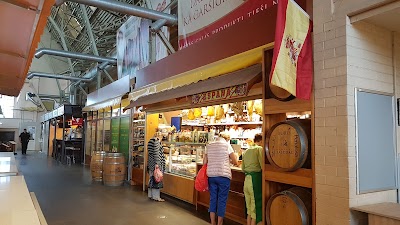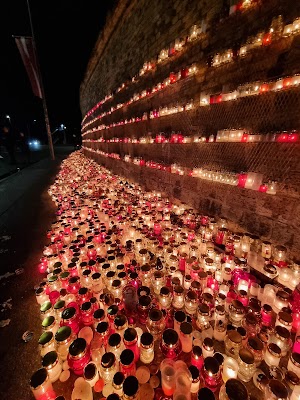National Museum of Art (Latvijas Nacionālais mākslas muzejs)
Overview
The Latvian National Museum of Art is a magnificent architectural gem nestled in the heart of Riga, Latvia. This prestigious institution showcases the richness of both Latvian and global art, and its captivating story is as remarkable as the artworks it houses.
The museum's origins trace back to the early 20th century, with the idea for a national arts museum emerging in the late 19th century. Recognizing the need for a dedicated space to celebrate the country's artistic heritage, local artists, city council members, and art patrons rallied together to bring this vision to life. With their support, plans were set in motion for a groundbreaking institution.
The architectural design was crafted by the talented German-Baltic architect Wilhelm Neumann, who embraced the ornate eclecticism that was in vogue across Europe. His design elegantly combines elements of Neo-Renaissance and Art Nouveau styles. Construction began in 1903, and after three years of diligent work, the museum was completed in 1906, marking a significant milestone in Latvia's cultural landscape.
The museum building itself is a work of art. Its façade is adorned with rich decorative elements that signal its cultural prestige from afar. Inside, spacious and well-lit galleries create optimal viewing conditions for the museum's extensive collection. High ceilings, embellished with intricate details, add a touch of grandeur to the experience.
As visitors step inside, they are greeted by an elegant marble staircase that sets the tone for the artistic treasures that await. The interior design faithfully respects the original architectural plans, preserving the historical ambiance while seamlessly integrating modern amenities.
Over the years, the museum's collection has expanded to encompass over 52,000 works of art, representing a diverse array of periods and styles from both Latvian and international artists. This impressive collection includes paintings, sculptures, graphic art, and decorative art, providing a comprehensive view of artistic evolution from the 16th century to the present.
To align with contemporary museum standards, the Latvian National Museum of Art underwent a significant renovation from 2010 to 2015. During this time, the museum temporarily closed its doors to the public while Riga-based architecture firms Leta Design and Processoffice were commissioned to carry out extensive improvements. Their work masterfully blended the historic with the modern, ensuring the museum retained its vintage charm while incorporating state-of-the-art facilities.
The renovation included the expansion of exhibition spaces, installation of modern lighting systems, improved climate control to protect the artworks, and enhanced accessibility features for visitors. One of the most striking additions was the creation of an underground exhibition hall and storage facility. This innovative space not only increased the museum's capacity but also offered a fresh way for visitors to engage with the art housed beneath the historic structure.
Since its reopening in 2016, the Latvian National Museum of Art has flourished as a center for cultural enrichment. It hosts a variety of temporary exhibitions, educational programs, and events that actively engage both the local community and international visitors. The museum's unwavering dedication to preserving and celebrating art solidifies its status as a cornerstone of Riga's cultural scene.
This iconic museum not only serves as a guardian of Latvia's artistic heritage but also stands as a testament to the country's commitment to fostering and appreciating the arts. For anyone interested in experiencing the beauty and diversity of art in Latvia, the Latvian National Museum of Art is an absolute must-visit destination.









